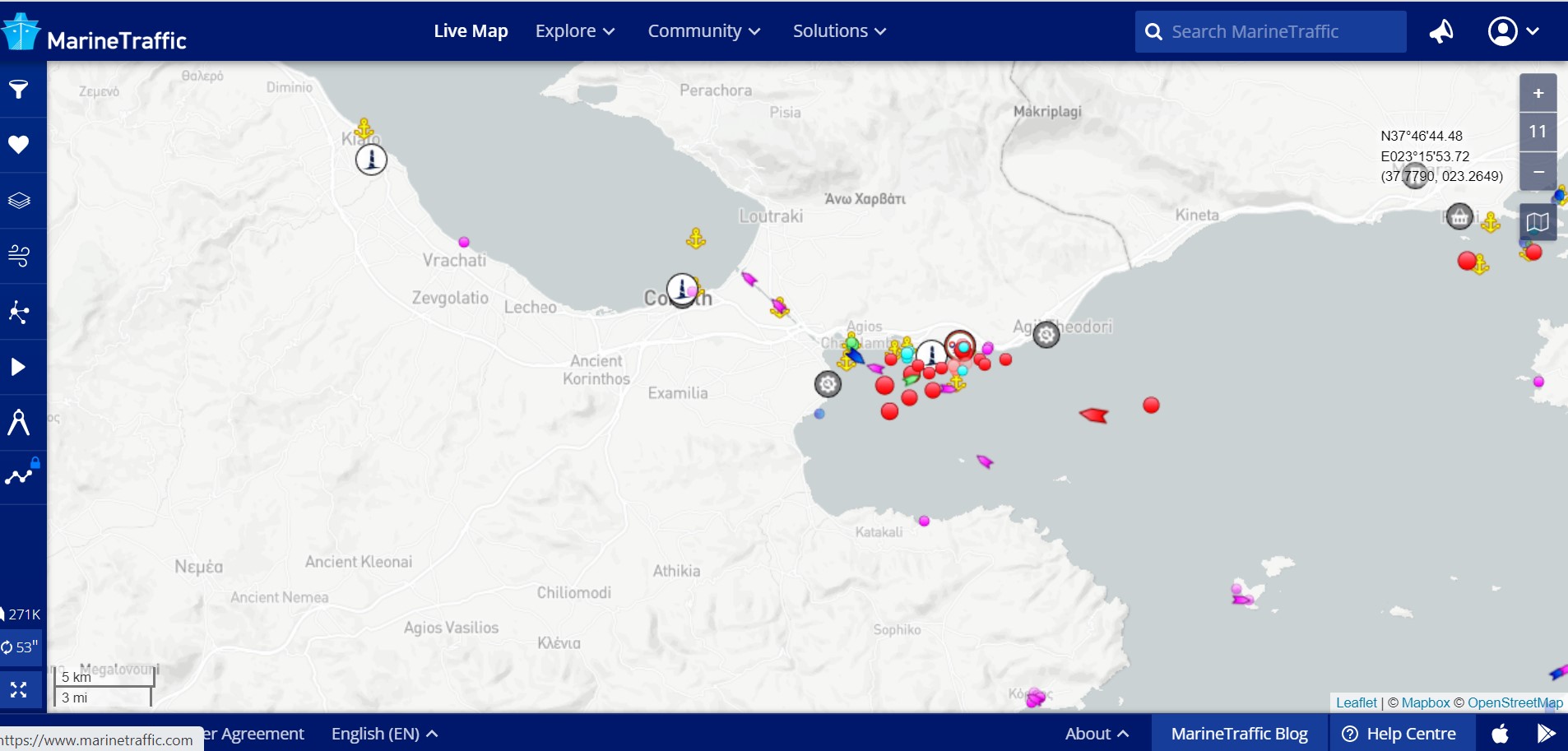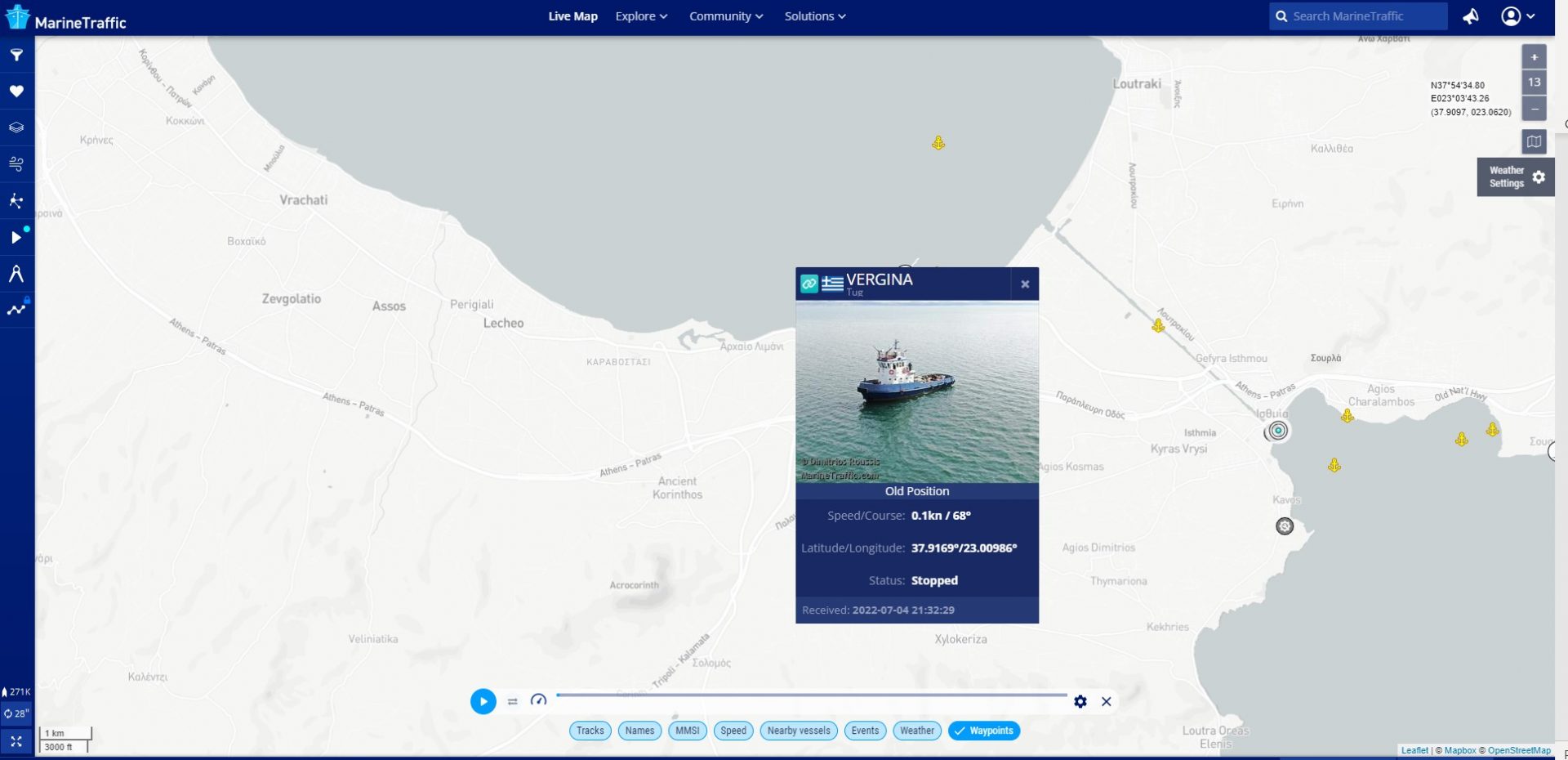Source The Marine Traffic
By Penny Thomas
Media www.rajawalisiber.com – The increasing size of commercial ships has reduced the economic importance of Greece’s Corinth Canal, but its temporary reopening on Monday 4 July illustrates that there are still commercial possibilities for this waterway.
Connecting the Gulf of Corinth on the Ionian Sea with the Saronic Gulf on the Aegean Sea, the 6.4 km-long, 21.3 m-wide, and 8 m-deep man-made canal was closed over a year ago due to a series of landslides that started in 2020. According to Insights Greece, the government has committed 30.6 million euros (USD 31 million) to vital restoration works to make the waterway navigable once more.
The Hellenic Corporation of Assets and Participations (HCAP) maintains that the Corinth Canal remains an important waterway, both historically and economically. Its CEO, Gregory D. Dimitriadis, said in a statement, that along with the restoration plan already underway, “a modern development plan will be drafted, aiming to maximize the canal’s role not only in the wider region’s development, but also in the country’s economy”.
The report highlights that in 2019, before the landslides, 11,417 vessels transited the waterway. “55% of those [vessels] are tourism-related, a fact that demonstrates the project significance to the region and its potential upon the completion of the restoration works,” said the CEO.
MarineTraffic data reveals, however, that between January 2020 and January 2021 only 2,520 vessels made their way through the canal. Of these, 47%, or 1,192 vessels, were pleasure craft. With pleasure craft representing a high percentage of the canal’s overall traffic, 2020’s lower figures may be due to COVID-19 restrictions that limited travel. Already, in the one week since the canal’s reopening on 4 July this year to 11 July, 159 pleasure craft have transited.

MarineTraffic showed two pleasure craft transiting the canal on 4 July
Whilst pleasure craft make up a considerable proportion of the canal’s traffic, MarineTraffic ship tracking data also shows that a significant amount of break bulk cargo vessels also utilises the route. In 2020, 843 break bulk carriers made their way through, representing 33.5% of traffic that year.
Other vessel types that regularly transit the route are tankers, which made up 5.7% of traffic, along with small numbers of containerships, dry bulk, fishing vessels and LPG carriers, passenger ships and supporting vessels (such as tugs to navigate larger vessels’ transit), and tankers.
It is therefore understandable that the Greek government is hoping to capitalise on the commercial possibilities of the canal. According to Greek shipping news source Ekathimerini, HCAP said that improvements to the canal will include a “new dynamic portal and e-commerce services, high-quality personalized services, online notification (arrival/transit), and online ticketing.”
Due to width restrictions of the waterway, traffic operates on a one-way system, and larger ships must be towed by a tug. Tug Vergina, joined the existing fleet earlier this year and now forms part of the improvement plan currently underway.
According to Ekathimerini, the Vergina will “expand the existing fleet’s services (of towing during transit through the canal) to towing and assistance with safe handling during docking of merchant vessels at the ports of Corinth, Kiato, Thisvi, Kalamaki and Sousaki, all in the greater Corinth Canal region.”
Upgrades also include fencing along the canal, and construction of a 3.5 km paved footpath. “These projects will change the face of the region, further enhancing it aesthetically and giving visitors safe access to the canal,” HCAP said.
The canal will temporarily close again during quieter seasons to allow for further upgrades.
The MarineTraffic Live Map reveals that Vergina can be seen at the eastern mouth of the canal in the Saronic Gulf.

MarineTraffic data plots tug Vergina on the Saronic Gulf on 8 July
Completed in 1893, as “the most iconic modern Greek engineering project” the canal is of great cultural significance to the shipping nation.
MarineInsight comments: “The Corinth Canal is nowadays losing its economic importance due to its inability to accommodate modern large vessels, though many small cargo ships and cruise ships still make a voyage through the canal regularly.
In order to uphold its legacy, the local authorities are working [on] ambitious plans to make changes in the measures of the canal, enabling the passage of modern ocean freighters.”
The reopened canal will be a game-changer for vessels small enough to transit it – the largest vessel size is 17.6 m wide, with a draft up to 7.3 m. Such vessels will no longer need to make the 700-km journey around the Peloponnese peninsula, saving time and money.
Larger vessels have also been known to successfully navigate this waterway. In October 2019, a 22.5 m-wide and 195 m-long Fred Olsen cruise ship, with over 900 passengers on board, sailed through the passage, setting a new record.
With time and money, perhaps vessels of this size will be more frequent visitors to this important piece of Greek engineering, to the commercial advantage of the region.

